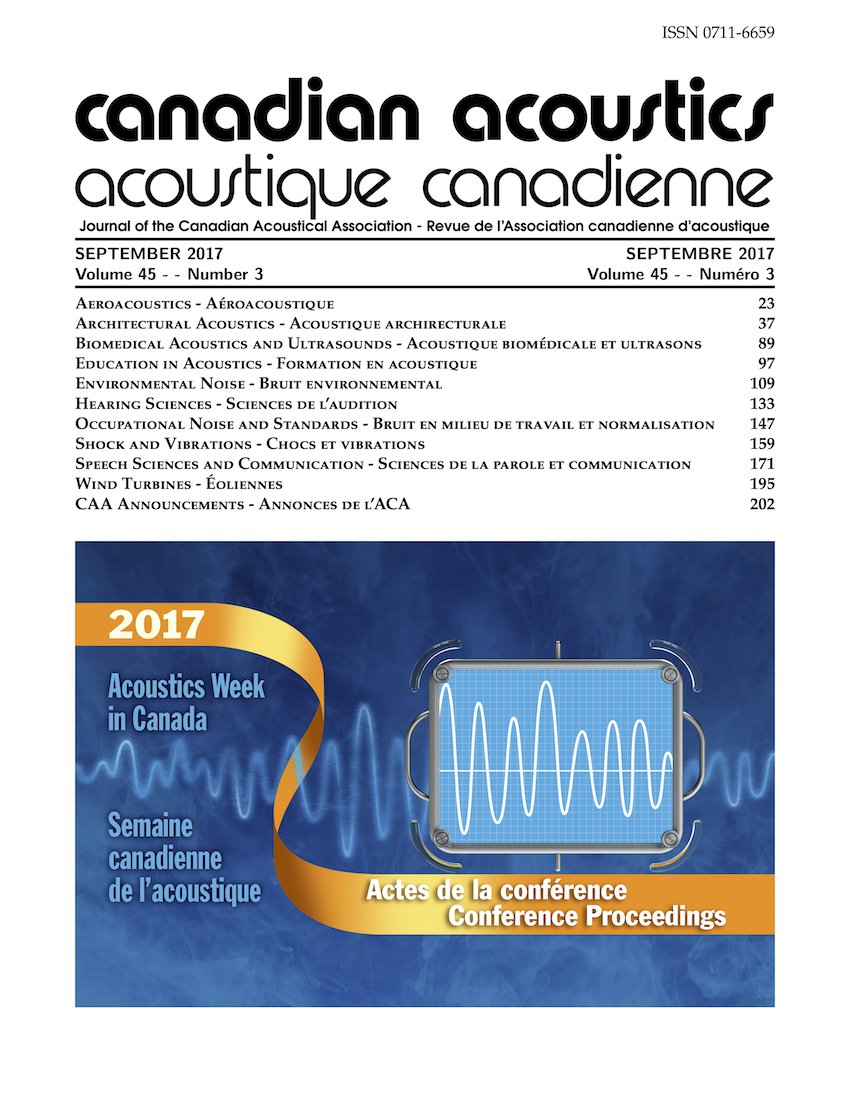BEAM-TRACING PREDICTION OF ROOM-TO-ROOM SOUND TRANSMISSION AND THE ACCURACY OF DIFFUSE-FIELD THEORY
Abstract
This paper validates the applicability of the classical diffuse-field prediction formula of room-to-room sound transmission used by many practitioners using energy- and phase-based beam-tracing models. An existing beam-tracing model for empty, parallelepiped rooms with specularly-reflecting surfaces has been adapted to predict room-to-room sound transmission between the source and receiver rooms separated by a common partition. For simplicity, initially sound transmission through the homogeneous common wall is modelled as one locally-reacting homogenous partition with frequency-independent transmission loss. The energy-based beam-tracing model has been validated in both source and receiver rooms through existing results from ODEON in the literature and by comparing the prediction results with CATT-Acoustic room-to-room sound transmission model. The phase-based beam-tracing model has been validated in the source room in comparison with COMSOL predictions. The new models are then used to investigate the accuracy of the classical diffuse-field formula in both source and receiver rooms. The diffuse-field prediction formula is found quite accurate in both the rooms in the beam-tracing prediction for cubic room shape and uniform absorption of all the room surfaces (i.e. for diffuse sound fields); however, it’s accuracy decreases significantly with changes in the shape of the room and the distribution of its surface absorption (i.e. more non-diffuse sound fields).
Additional Files
Published
How to Cite
Issue
Section
License
Author Licensing Addendum
This Licensing Addendum ("Addendum") is entered into between the undersigned Author(s) and Canadian Acoustics journal published by the Canadian Acoustical Association (hereinafter referred to as the "Publisher"). The Author(s) and the Publisher agree as follows:
-
Retained Rights: The Author(s) retain(s) the following rights:
- The right to reproduce, distribute, and publicly display the Work on the Author's personal website or the website of the Author's institution.
- The right to use the Work in the Author's teaching activities and presentations.
- The right to include the Work in a compilation for the Author's personal use, not for sale.
-
Grant of License: The Author(s) grant(s) to the Publisher a worldwide exclusive license to publish, reproduce, distribute, and display the Work in Canadian Acoustics and any other formats and media deemed appropriate by the Publisher.
-
Attribution: The Publisher agrees to include proper attribution to the Author(s) in all publications and reproductions of the Work.
-
No Conflict: This Addendum is intended to be in harmony with, and not in conflict with, the terms and conditions of the original agreement entered into between the Author(s) and the Publisher.
-
Copyright Clause: Copyright on articles is held by the Author(s). The corresponding Author has the right to grant on behalf of all Authors and does grant on behalf of all Authors, a worldwide exclusive license to the Publisher and its licensees in perpetuity, in all forms, formats, and media (whether known now or created in the future), including but not limited to the rights to publish, reproduce, distribute, display, store, translate, create adaptations, reprints, include within collections, and create summaries, extracts, and/or abstracts of the Contribution.


